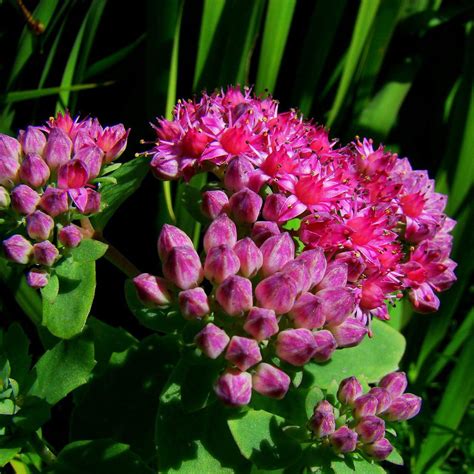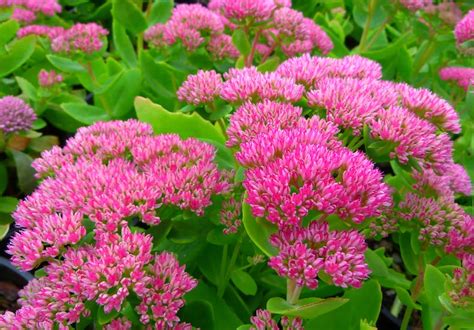Gardening in dry climates can be a rewarding challenge that transforms your outdoor space into a lush, vibrant oasis, even with limited water resources. Creating a drought-tolerant garden involves selecting the right plants, implementing efficient irrigation techniques, and designing your landscape with water conservation in mind. From soil preparation and mulching to smart garden layouts and sustainable maintenance practices, there are many strategies to ensure your garden thrives in arid conditions. In this article, we’ll explore top tips for cultivating a beautiful, low-water garden that not only saves water but also enhances your home’s curb appeal and supports local ecosystems.
Come explore this topic with shzow.com for a deeper understanding.
1. Selecting Drought-Resistant Plants
Choosing the right plants is the cornerstone of creating a successful drought-tolerant garden. Native plants are often the best option, as they have adapted to local climate conditions and require minimal water once established. Consider incorporating a mix of succulents, such as sedums and agaves, alongside hardy perennials like lavender, sage, and yarrow. These plants are not only beautiful but also have deep root systems that access water from deeper soil layers, making them more resilient during dry spells.
In addition to perennials and succulents, ornamental grasses such as blue fescue and feather reed grass can add texture and movement to your garden while thriving in low-water environments. When selecting plants, focus on varieties known for their drought resistance and low maintenance needs. Group plants with similar water requirements together to maximize efficiency in irrigation. This practice, known as “hydrozoning,” ensures that each plant receives the appropriate amount of water, reducing waste and promoting healthy growth. By carefully selecting drought-resistant plants, you can create a lush, diverse landscape that requires less water, reduces maintenance, and enhances your outdoor living space.

2. Efficient Irrigation Techniques
Efficient irrigation is crucial for maintaining a drought-tolerant garden while conserving water. Drip irrigation systems are an excellent choice, as they deliver water directly to the plant roots, minimizing evaporation and runoff. This targeted approach not only saves water but also ensures that each plant receives the necessary moisture. For smaller gardens, soaker hoses are another effective option, providing slow and steady water delivery along the base of plants.
Watering in the early morning or late evening helps reduce evaporation caused by the midday sun, allowing the soil to retain moisture longer. Additionally, using rain barrels to collect and store rainwater provides a sustainable source of irrigation. When setting up your irrigation system, consider installing a timer to automate watering schedules and prevent over-watering. Regularly check for leaks or blockages in hoses and emitters to ensure optimal performance. By implementing these efficient irrigation techniques, you can maintain a thriving garden with minimal water use, supporting both plant health and environmental sustainability.

3. Soil Preparation and Mulching
Proper soil preparation and mulching are essential steps for creating a drought-tolerant garden that thrives in dry conditions. Start by improving the soil’s ability to retain moisture while still allowing for adequate drainage. Adding organic matter, such as compost or well-rotted manure, enhances soil structure, promotes healthy root development, and increases its water-holding capacity. For areas with heavy clay or sandy soils, consider incorporating gypsum or other soil conditioners to improve texture and nutrient availability.
Mulching is another effective way to conserve moisture and protect your garden from heat and drought. Apply a 2- to 4-inch layer of organic mulch, like wood chips, shredded bark, or straw, around the base of your plants. This layer helps reduce evaporation, suppress weeds, and moderate soil temperature, creating a more stable environment for plant roots. Additionally, mulch gradually breaks down, adding essential nutrients to the soil over time.
For best results, reapply mulch annually and keep it a few inches away from plant stems to prevent rot. By preparing your soil properly and using mulch wisely, you can create a resilient garden that conserves water, reduces maintenance, and supports healthy plant growth.

4. Smart Garden Design and Layout
Designing a drought-tolerant garden with a smart layout can significantly enhance its water efficiency and aesthetic appeal. Start by grouping plants with similar water needs together, a practice known as hydrozoning. This approach ensures that each section of your garden receives the appropriate amount of water, reducing waste and promoting healthier plant growth. Place high-water plants in areas that receive natural runoff or near water sources, while low-water plants can be positioned in drier, more exposed spots.
Incorporate hardscaping elements like gravel pathways, rock gardens, or decorative stones to reduce the amount of water-dependent lawn space and add visual interest. Utilize raised beds or berms to improve drainage and control water flow, especially in areas prone to heavy rainfall or runoff. Consider using permeable materials for walkways and patios to allow rainwater to filter back into the soil. By thoughtfully designing your garden layout, you can create a beautiful, functional outdoor space that thrives with minimal water use, enhances biodiversity, and aligns with sustainable gardening practices.
5. Water Conservation Strategies
Water conservation is key to sustaining a drought-tolerant garden, and there are several strategies to help reduce water use. Start by capturing and reusing rainwater with rain barrels or cisterns, which can provide a free and eco-friendly water source for your plants. Installing a greywater system to recycle household water from sinks, showers, or washing machines can also contribute to garden irrigation.
To minimize evaporation, consider using techniques like mulching and planting ground cover to protect the soil. Opt for watering methods that minimize water loss, such as drip irrigation or soaker hoses. Adjusting your watering schedule to early morning or late evening prevents water from evaporating in the midday heat.
Additionally, regularly check your garden for leaks or pooling water, and fix any issues promptly to avoid water waste. By implementing these water conservation strategies, you can maintain a vibrant garden that requires less water, supports local ecosystems, and reduces your environmental impact.
6. Maintenance and Care for Low-Water Gardens
Maintaining a low-water garden involves adopting practices that promote plant health while minimizing water use. Regularly inspect your garden for signs of stress, such as wilting or yellowing leaves, which can indicate improper watering or nutrient deficiencies. Pruning is essential for encouraging healthy growth and airflow among plants, which helps reduce water loss through transpiration. Remove dead or damaged branches and foliage to improve plant vitality and aesthetics.
Weeding is another crucial task, as weeds compete with your plants for water and nutrients. Mulching not only conserves moisture but also suppresses weed growth, making maintenance easier. Periodically replenish your mulch layer to ensure its effectiveness. Deep, infrequent watering encourages plants to develop deeper root systems, making them more drought-resistant. Monitor your irrigation system for leaks or blockages, and adjust emitters or soaker hoses as needed to deliver water efficiently.
Fertilize sparingly using organic compost or a slow-release, low-nitrogen fertilizer, as excessive nutrients can cause rapid growth that requires more water. Focus on building healthy soil through organic amendments, which retain moisture better and support plant resilience. By following these maintenance and care practices, you can keep your drought-tolerant garden flourishing with minimal water, ensuring a beautiful, sustainable landscape throughout the year.
Creating a drought-tolerant garden requires thoughtful planning and implementation of strategies that conserve water and enhance plant resilience. By selecting drought-resistant plants, utilizing efficient irrigation techniques, preparing soil properly, and incorporating smart design elements, you can build a thriving garden that withstands dry conditions. Regular maintenance and water conservation practices will ensure your garden remains vibrant and sustainable. Embrace these tips to cultivate a beautiful, low-water garden that supports both environmental sustainability and aesthetic appeal.
shzow.com
